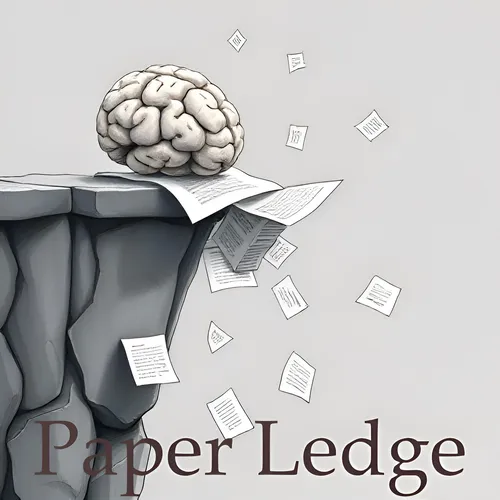Software Engineering - Rethinking LLM-Based RTL Code Optimization Via Timing Logic Metamorphosis
- Author
- ernestasposkus
- Published
- Wed 23 Jul 2025
- Episode Link
- https://www.paperledge.com/e/software-engineering-rethinking-llm-based-rtl-code-optimization-via-timing-logic-metamorphosis/
Hey PaperLedge crew, Ernis here, ready to dive into some seriously cool tech! Today, we're cracking open a paper that looks at how we can use AI – specifically those brainy Large Language Models, or LLMs – to make our digital circuits faster and more energy-efficient.
Now, you might be thinking, "Digital circuits? That sounds complicated!" And you're not wrong. Think of them as the tiny building blocks inside your phone, your computer, even your smart fridge. They're what make everything tick. But designing them to be super speedy and not drain your battery is a real challenge. It's like trying to build a super-efficient engine for a race car – every little tweak counts.
Traditionally, engineers have optimized these circuits by hand, tweaking the code that describes how they work. This code is called RTL, which stands for Register Transfer Level. Imagine it like LEGO instructions for building these circuits. The problem is, this manual tweaking takes ages and is prone to errors. It’s like trying to solve a Rubik's Cube blindfolded!
That's where LLMs come in. The idea is to feed these AI models the RTL code and ask them to find ways to make it better – faster, more efficient, the works! These LLMs, which are trained on massive amounts of data, could potentially spit out optimized code snippets automatically. Sounds amazing, right?
This paper asks a crucial question: Can LLMs really handle the complex timing logic in RTL code? See, it's not just about making the circuit work, it's about making it work on time. Timing is everything! Think of it like conducting an orchestra. If the different sections aren't playing in perfect sync, the whole piece falls apart.
To figure this out, the researchers created a new benchmark – a set of challenges specifically designed to test how well LLMs can optimize RTL code. They divided these challenges into different areas, like optimizing basic logic and handling complex timing issues.
- Optimizing logic operations (making the basic building blocks more efficient)
- Optimizing timing control flow (making sure signals arrive at the right time)
- Optimizing clock domain crossings (dealing with different parts of the circuit running at different speeds)
They then used a clever technique called "metamorphic testing." The core idea is that if an optimization is actually good, it should work consistently, even when the code is slightly different but functionally the same. Imagine you have a recipe for a cake. If you double the ingredients, you should still end up with a cake, right? Metamorphic testing applies a similar logic to the circuit optimization.
So, what did they find? The results were mixed. On the one hand, LLMs were pretty good at optimizing basic logic, even outperforming traditional methods in some cases. That's a win!
“LLM-Based RTL optimization methods can effectively optimize logic operations and outperform existing compiler-based methods.”
However, when it came to complex timing logic – the stuff that really matters for high-performance circuits – LLMs didn't do so hot. They struggled, especially when it came to timing control and clock domain optimization. It seems LLMs, at least for now, have a hard time fully grasping the nuances of timing in RTL code.
“LLM-Based RTL optimization methods do not perform better than existing compiler-based methods on RTL code with complex timing logic, particularly in timing control flow optimization and clock domain optimization.”
Think of it like this: the LLM is great at understanding the individual notes in a musical score, but it struggles to understand the rhythm and tempo that bring the music to life.
So, why does this research matter?
- For hardware engineers: It shows the potential and limitations of using AI to automate circuit optimization. It highlights where LLMs can help and where traditional methods are still needed.
- For AI researchers: It points to the challenges LLMs face when dealing with complex timing relationships and suggests areas for future improvement. How can we train LLMs to better understand timing constraints?
- For everyone: It demonstrates how AI is being explored to improve the technology that powers our world, potentially leading to faster, more energy-efficient devices.
Here are a couple of questions this paper raised for me:
- How can we better train LLMs to understand the concept of time in code, not just in natural language? Could we use different training data or architectures?
- Could we combine LLMs with traditional optimization techniques to get the best of both worlds – the AI's ability to quickly explore possibilities and the engineer's deep understanding of timing constraints?
That's the gist of it, learning crew. It's a fascinating glimpse into the future of circuit design and the role AI will play in shaping it. Until next time, keep those circuits humming!
Credit to Paper authors: Zhihao Xu, Bixin Li, Lulu Wang
